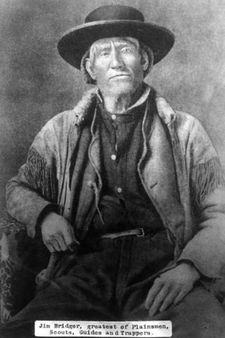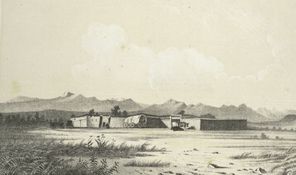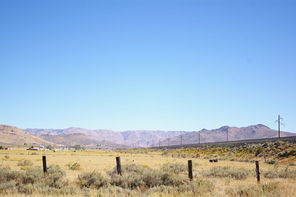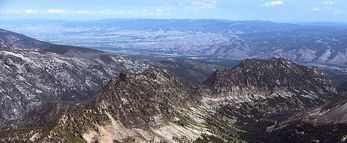 Bitterroot Valley from El Capitan Peak
Bitterroot Valley from El Capitan Peak
The year 1841 was a very dynamic year in history. On January 26th the British occupied Hong Kong, beginning 156 years of rule there. On April 4th President William Henry Harrison died of pneumonia while in office, and just a month after being elected, the first American president to do so. And on September 24th Father Pierre-Jean De Smet arrived in Montana’s Bitterroot Valley to start what would become the state’s first permanent settlement.
The fur trade was over by then, having come to an end the previous year when fashion tastes in Europe changed from fur to silk. That change spelled the end for the far-ranging mountain men that roamed through the mountains and forests of the state, but never created any permanent presence.
Some of the Indians in the state were accepting of the white man’s presence, others not so much. Some of those that wanted a greater white presence were the Salish, or Flathead Indians of western Montana. It was due to their insistence on having religion, and the white protection that went with it, that Montana got its first cattle, crops, and church, and saw its whole history change in the process.
The Quest for a Black Robe
 Flathead Family, c 1900
Flathead Family, c 1900
It was the Blackfeet, after all, that had driven the plains tribe up into the mountains in the first place, and as the whiltes continued to push west the Flatheads were fearful that they’d be pushed further by the Blackfeet. Baptisms and hymns would protect them from their enemies bullets they felt, and if that meant converting to a foreign religion, then so be it.
Chief Tjolzhitsay, more commonly known as Big Face, sent out a delegation to St. Louis right away, knowing that there were “Black Robes” there that could help them. If they would only listen they would convince some of them to come back with them and spread the word of God to their people.
The Four Delegations
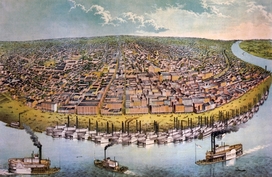 St. Louis in 1840
St. Louis in 1840
Another delegation was sent in 1837, again through hostile enemy territory, this time without much luck. The whole group was killed by the Sioux Indians of the area, including one of the main people to so interest the Flatheads in Catholicism, Ignace la Mouse, or Big Ignace.
The Flathead waited, biding there time, knowing that God would not forsake them. They tried again in 1839, for the final time, and their prayers were answered. They received the promise from Bishop Rosati that a “Black Robe” would be sent to them. They returned home and eagerly waited, a wait that would last them another two years before deliverance came at last.
Baumler, Ellen. Montana Moments: History on the Go. Montana Historical Society Press: Helena, 2010. p 125.
Carriker, Robert C. Father Peter John De Smet: Jesuit in the West. University of Oklahoma Press: Norman, 1995. p 31-64.
“History of St. Mary’s.” Historic St. Mary’s Mission & Museum. Web. Retrieved 7 June 2013 from Stmarysmission.org: http://www.saintmarysmission.org/history.html
Malone, Michael Peter; Roeder, Richard B.; Lang, William L. Montana: A History of Two Centuries. The University of Washington Press, 1976. p 62-3.
Toole, K. Ross. Montana: An Uncommon Land. University of Oklahoma Press: Norman, 1959. p 57-61.

